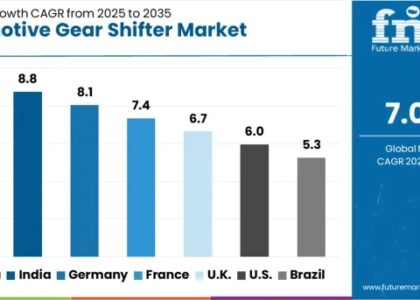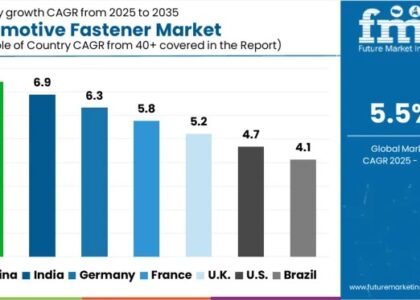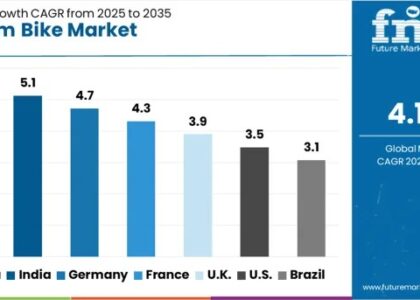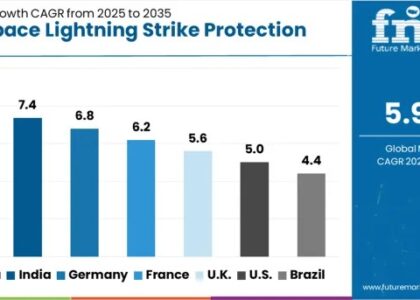The seafood takeout market is expected to escalate at a CAGR of 6.50% from USD 31.1 Billion in 2022 to USD 51.3 Billion through 2032.
The COVID-19 pandemic has benefited the global seafood market as more people have taken up home cooking and retail purchasing. As online markets have become the primary outlets for fish and seafood, the demand for seafood takeout has increased, particularly during the lockdown. The availability of ready-to-eat seafood has helped the seafood market to remain stable during the pandemic.
COVID-19 has caused key changes in the seafood takeout market trends, business across the seafood supply chain faced unclear operating conditions during the lockdown, with governments providing unprecedented levels of assistance to employees and businesses. However, businesses had no concrete idea when export and UK food service markets would reopen.
Download Sample Copy with Graphs & List of Figures: https://www.futuremarketinsights.com/reports/sample/rep-gb-14995
Market growth has been attributed to consumer awareness of the health benefits of seafood and a change in lifestyle. Non-vegetarian consumers are gradually changing their lifestyle and significantly following pescatarians. Pescatarians refers to vegetarian food and seafood, but no meat, such as beef, pork, or chicken.
The trend towards pescatarians and the availability of high-quality seafood like sushi, as well as the increasing consumer spending on seafood dishes are some of the main factors contributing to the growth of the seafood takeout market, boosting the demand for seafood takeout.
Fresh seafood uses a majority of the market due to its health benefits, and it is highly preferred by consumers as a result of sedentary lifestyles and rising income levels, as well as an escalating awareness about health and wellness.
Increasing consumer awareness of the living conditions in cattle farms and the increased demand for alternatives have also contributed to this shift. Furthermore, as meat and meat products often contain harmful pesticides and chemicals, their high consumption can be unhealthy, thus consumers are seeking alternative foods.
As a result of the disappearance of sea species, the market has been hampered; however, sustainable fishing may provide a solution to resolve the environmental issues and make the market more environmentally, economically, and socially sustainable.
About 80 percent of the total catch of the United States Commercial Fisheries and Seafood Industry are consumed as human food, which proves to have a significant demand for seafood takeout across these countries. Additionally, together with manufacturers, even retailers are introducing their own seafood brands as a part of strategies to expand their markets, like Walmart.
Asian economies, such as China and India, are making well known fish related cuisines across the world. This is being reflected by the wide range of fish related dishes on offer at restaurants across the region that are cashing in on the seafood takeout markets key trends & opportunities.
KEY TAKEAWAYS:
- In the United States, the seafood takeout market is estimated to reach US$ billion by 2032, rising at a CAGR of 39.8% throughout the forecast period.
- By 2032, the seafood takeout market in the United Kingdom is expected to be valued US$ million, with a CAGR of % through 2032.
- With a CAGR of % throughout the forecast period, China is expected to reach a market size of US$ million in seafood takeout market by 2032.
- By 2032, the seafood takeout market in Japan is estimated to be worth US$ million, growing at an annual rate of % through 2032.
- With a CAGR of % throughout the forecast period, South Korea is predicted to reach a market size of US$ million in seafood takeout market by 2032.
COMPETITIVE LANDSCAPE:
Grupo Nueva Pescanova, Marine Harvest ASA, Leigh Fisheries Ltd., are three of the most successful companies generating revenue from the seafood takeout market.
Players operating in the market have been focusing on further increasing their product offerings, through producing a wider variety of seafood products, such as fillets, portions, rings, etc. Additionally, the product portfolios of players are dominated by fillets and portions due to the high consumer demand for seafood takeout from these countries, since these products are extensively used in foodservice and retail.
These collaborations with digital marketing and other companies have also helped companies to improve their supply chain and management efficiency. As well as helping retailers to trust the products and secure the farming for long-term expansion & development of the seafood takeout of the industry. Mergers and acquisitions, followed by expansion, are some of the most preferred strategies among the seafood industries globally.
RECENT DEVELOPMENT:
- Pacific launched a value-added seafood product for Amazon Go in May 2021, and Amazon is partnering with them to create around 20 value-added seafood products quarterly for their Amazon Go stores, which number 29 now – with more to come.
- The Nissui company developed a new type of frozen food with a natural thawing process at room temperature in June 2021. You simply select a portion in a cup and place it in your lunchbox, contributing to the growth of the seafood takeout market.
- Since the early 90s, Asia Pacific has become one of the most prolific markets for food service restaurants due to the opportunities facilitated by the developing economies. Additionally, in recent years, the application of online ordering has been increasing at a rapid pace, thus giving restaurants a chance to expand their sales channels & revenue, creating higher adoption rate of the seafood takeout market.
Key segments
By Product Type:
- Shrimp
- Tuna
- Salmon
- Pollock
- Catfish
- Tilapia
- Crab
- COD
- Clams
- Others (Flatfish, Oysters, Mussels, lobster)
By Restaurants Type:
- Quick service restaurant
- Full-service restaurant
- Cafés and bars
- Street food
By Business Type:
- Chained foodservice
- Independent foodservice
By Purchase Model:
- Direct-to-consumer
- Platform-to-consumer
By Payment Type:
- Cash
- Debit cards
- Credit cards
- Digital Wallets
- Electronic bank transfers
Purchase the Report for Key Insights: https://www.futuremarketinsights.com/checkout/14995
Frequently Asked Questions
- What is the CAGR of the seafood takeout market?
- Which is the Leading Region in the seafood takeout market?
- Which Segment Leads to the seafood takeout market?
- What is the Growth Estimated for the seafood takeout market by 2032?
About Future Market Insights (FMI)
Future Market Insights, Inc. (ESOMAR certified, recipient of the Stevie Award, and a member of the Greater New York Chamber of Commerce) offers profound insights into the driving factors that are boosting demand in the market. FMI stands as the leading global provider of market intelligence, advisory services, consulting, and events for the Packaging, Food and Beverage, Consumer Technology, Healthcare, Industrial, and Chemicals markets. With a vast team of over 5000 analysts worldwide, FMI provides global, regional, and local expertise on diverse domains and industry trends across more than 110 countries.
Contact Us:
Future Market Insights Inc.
Christiana Corporate, 200 Continental Drive,
Suite 401, Newark, Delaware – 19713, USA
T: +1-845-579-5705
For Sales Enquiries: sales@futuremarketinsights.com
Website: https://www.futuremarketinsights.com
LinkedIn| Twitter| Blogs | YouTube






